
How Do You Hunt Hogs?
Part 1: Getting Ready Because feral hogs are a non-native species that compete for food with wildlife and livestock and
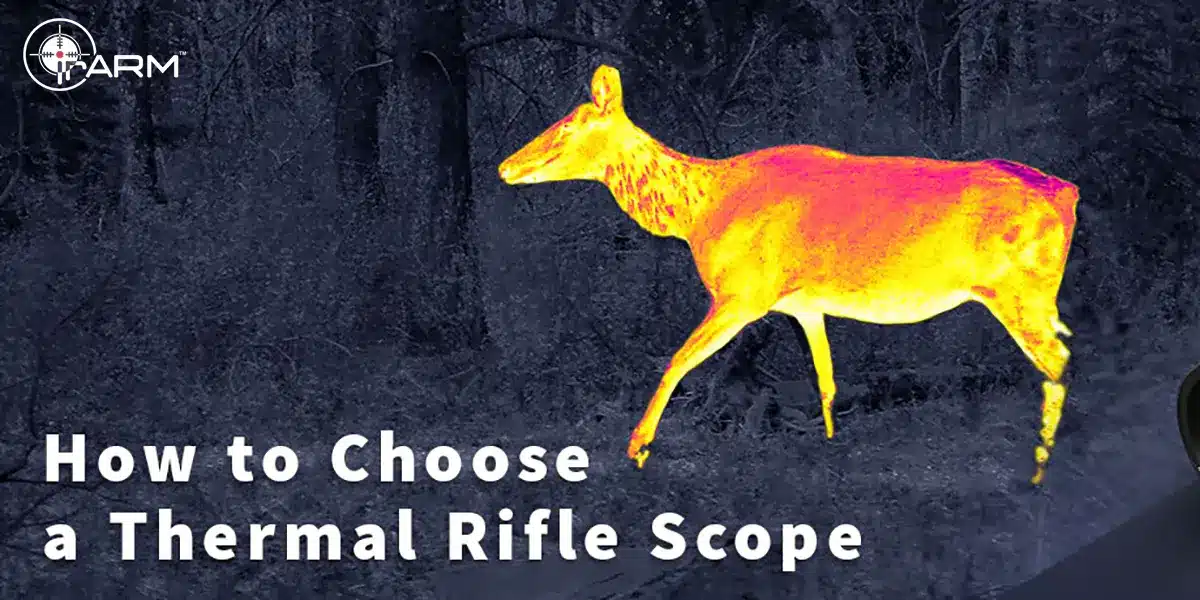

PhD in Optics, is an expert in the field of gun scopes and thermal optics with years of experience and numerous publications in academic journals.
Thermal scopes have revolutionized the way hunters, law enforcement professionals, and outdoor enthusiasts approach their activities. Unlike traditional scopes, which rely on visible light, thermal scopes utilize cutting-edge thermal imaging technology to detect heat signatures emitted by objects, regardless of lighting conditions. As a leading provider of thermal scopes and thermal cores, irARM™ understands the critical importance of choosing the right thermal scope for your needs. In this article, we will explore the key factors to consider when selecting a thermal scope to ensure optimal performance and functionality in various scenarios. Whether you’re tracking game in the wilderness or conducting surveillance operations in low-light conditions, making an informed decision about your thermal scope can significantly enhance your effectiveness and success. Let’s delve into the essential considerations that will guide you toward selecting the perfect thermal scope for your requirements.
Thermal imaging technology lies at the heart of every thermal scope, enabling users to detect and visualize heat signatures emitted by objects in their surroundings. Unlike traditional optical scopes, which rely on visible light to create images, thermal scopes operate by detecting the infrared radiation emitted by objects based on their temperature.
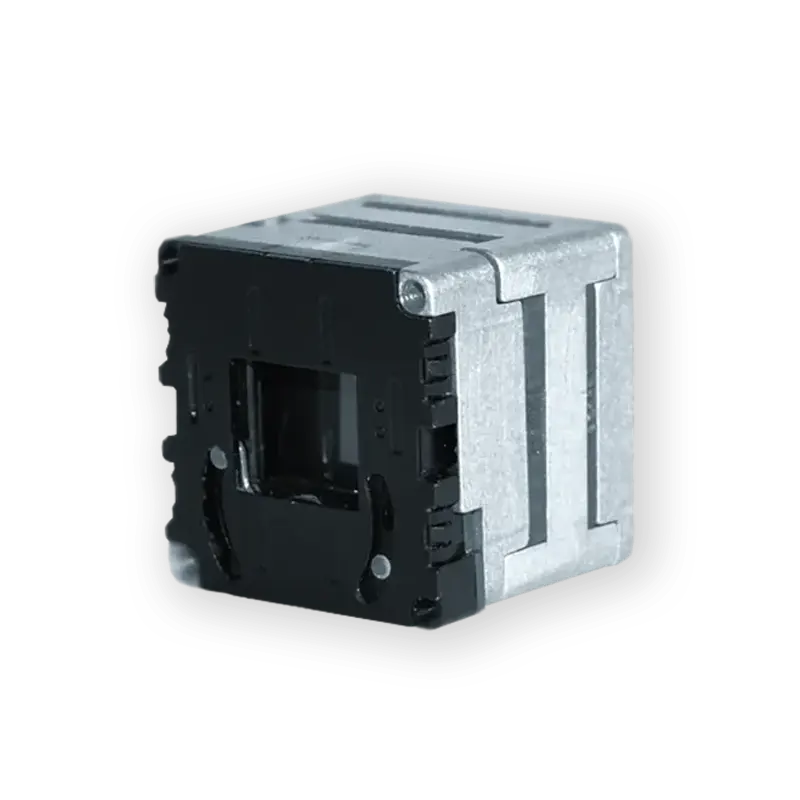 Explanation of how thermal imaging works:
Explanation of how thermal imaging works:Thermal imaging works on the principle that all objects emit infrared radiation, also known as heat. This radiation is invisible to the human eye but can be detected by specialized sensors within thermal scopes. These sensors convert the infrared radiation into electrical signals, which are then processed to create a visual representation of the scene.
There are two main types of thermal imaging sensors used in thermal scopes: uncooled and cooled. Uncooled sensors are more common and affordable, making them suitable for many applications. They operate at ambient temperatures and require less maintenance. Cooled sensors, on the other hand, offer higher sensitivity and resolution but come at a higher cost. They require cooling mechanisms to maintain optimal performance, typically using cryogenic cooling.
The resolution and sensitivity of the thermal imaging sensor play crucial roles in determining the clarity and detail of the thermal images produced by the scope. Higher resolution sensors can discern finer details and provide clearer images, enhancing target identification and recognition. Similarly, sensors with greater sensitivity can detect smaller temperature differences, allowing for better detection of targets in challenging environmental conditions.
Understanding the underlying technology of thermal imaging is essential for selecting a thermal scope that meets your specific needs and performance requirements. By considering factors such as sensor type, resolution, and sensitivity, you can ensure that you choose a thermal scope capable of delivering the level of performance necessary for your intended applications.
When selecting a thermal scope, one of the primary considerations is the magnification and quality of optics. Magnification plays a crucial role in target identification and engagement, while the quality of optics influences image clarity and sharpness.
Magnification determines how close objects appear when viewed through the thermal scope. Higher magnification levels allow for better target identification and engagement, particularly at longer distances. However, it’s essential to strike a balance between magnification and field of view, as excessive magnification can narrow the field of view and make it more challenging to track moving targets or scan the surrounding area effectively.
The quality of optics and lenses directly impacts the clarity and sharpness of thermal images produced by the scope. High-quality lenses with advanced coatings help minimize distortion, glare, and aberrations, resulting in sharper and more detailed images. Additionally, larger objective lenses allow more light to enter the scope, improving image brightness and contrast, especially in low-light conditions.
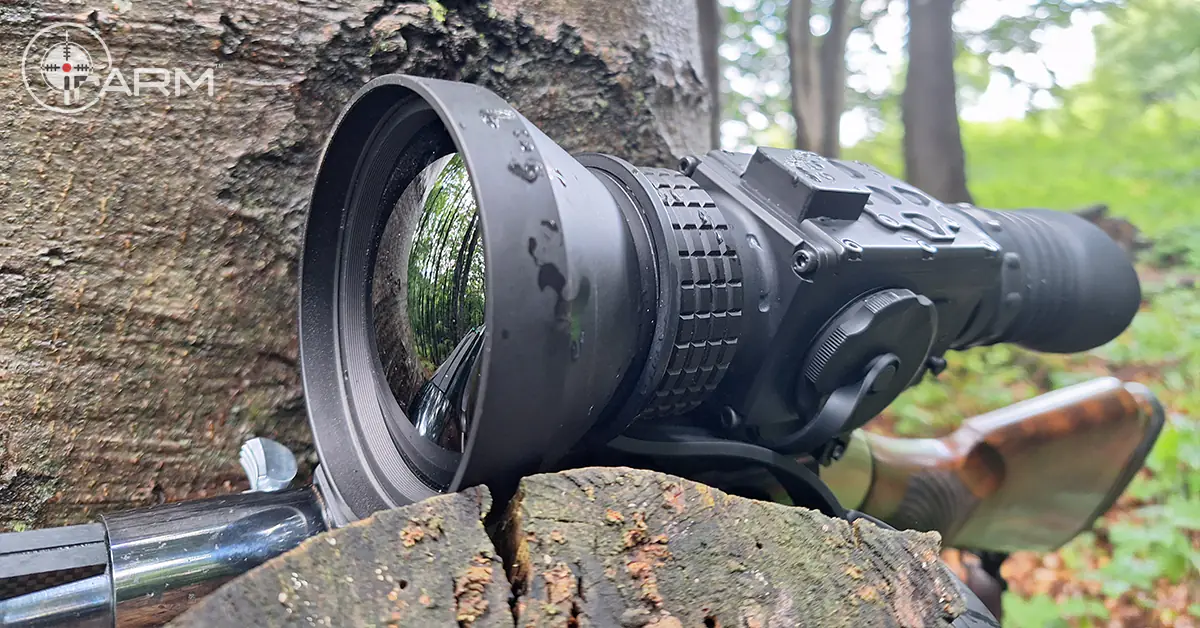
The ideal magnification and optics for a thermal scope may vary depending on the specific hunting or shooting scenario. For close-range engagements or dense brush environments, a thermal scope with lower magnification and a wide field of view may be more suitable for quick target acquisition. In contrast, long-range shooting or open terrain may require a thermal scope with higher magnification capabilities to accurately identify and engage targets at extended distances.
By carefully considering the magnification and optics of a thermal scope, users can ensure they select a device that meets their specific needs and preferences for target identification
Understanding the range and detection capability of a thermal scope is paramount for assessing its effectiveness in various scenarios. This section explores the factors influencing the scope’s range and detection capabilities, as well as the importance of adjustable detection settings.
The effective range of a thermal scope refers to the maximum distance at which it can reliably detect and identify targets. Several factors contribute to the scope’s effective range, including sensor sensitivity, optics quality, and environmental conditions. Higher sensitivity sensors and premium optics generally result in better performance at longer ranges, while factors like atmospheric conditions and target size can also impact range.
In addition to sensor sensitivity and optics quality, several other factors influence a thermal scope’s detection capability. These include the temperature contrast between the target and its surroundings, the emissivity of the target’s surface, and the presence of obstructions or camouflage. Understanding how these factors affect detection can help users optimize their thermal scope settings for different environments and targets.
 Importance of having adjustable detection settings:
Importance of having adjustable detection settings:Many modern thermal scopes offer adjustable detection settings, allowing users to customize the scope’s sensitivity and contrast to suit specific conditions and preferences. By fine-tuning these settings, users can enhance target detection in challenging environments, such as dense foliage or fluctuating temperatures. Additionally, adjustable detection settings enable users to minimize false positives and improve overall detection accuracy.
By considering the range and detection capabilities of a thermal scope, users can make informed decisions about its suitability for different applications and environments. Whether tracking game in the wilderness or conducting surveillance operations in urban settings, understanding these capabilities is essential for maximizing the effectiveness of a thermal scope.
The durability and weather resistance of a thermal scope are vital considerations, particularly for users who operate in harsh or unpredictable environments. This section delves into the construction materials, resistance to various elements, and the importance of warranty and customer support.
The durability of a thermal scope largely depends on the quality of its construction materials and build. Opting for scopes constructed from robust materials, such as aircraft-grade aluminum or reinforced polymers, can ensure resistance to impact, vibration, and rough handling. Additionally, scopes with sealed and ruggedized designs offer increased protection against dust, moisture, and debris ingress, enhancing their longevity and reliability in challenging conditions.
Thermal scopes designed for outdoor use should be capable of withstanding a wide range of environmental conditions. Water resistance, indicated by an IP (Ingress Protection) rating, ensures the scope remains operational even in wet or rainy conditions. 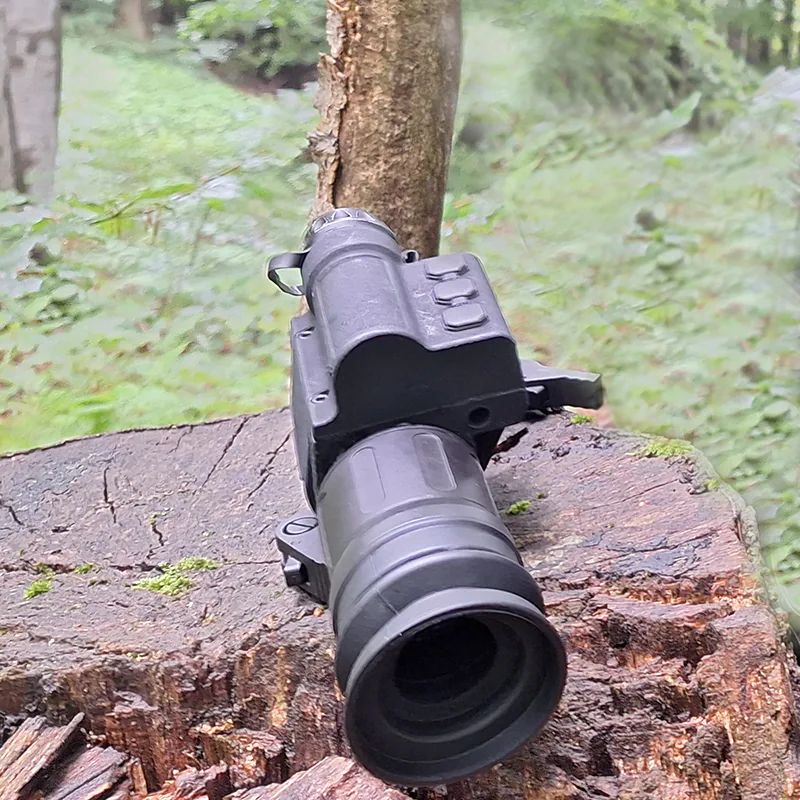
By prioritizing durability and weather resistance when selecting a thermal scope, users can ensure their investment withstands the rigors of outdoor use and delivers reliable performance in adverse conditions. Whether traversing rugged terrain or braving inclement weather, a robust and weather-resistant thermal scope serves as a dependable tool for outdoor enthusiasts and professionals alike.
Battery life and power options are critical considerations when choosing a thermal scope, as they directly impact the scope’s usability and convenience in the field. This section examines the various power sources available for thermal scopes, battery life expectations, and the importance of power-saving features.
Thermal scopes commonly utilize rechargeable batteries, such as lithium-ion or lithium-polymer batteries, as their primary power source. These batteries offer the advantage of being rechargeable, reducing the need for frequent battery replacements and ensuring uninterrupted operation during extended outings. Additionally, some thermal scopes may support alternative power sources, such as external battery packs or adapters for vehicle power outlets, providing users with flexibility and versatility in powering their scopes.
The battery life expectancy of a thermal scope varies depending on factors such as sensor power consumption, display brightness settings, and usage patterns. Manufacturers typically provide estimated battery life specifications under standard operating conditions, allowing users to gauge how long their scopes will last on a single charge. However, it’s essential to consider real-world usage scenarios and plan accordingly, especially for prolonged hunting expeditions or surveillance missions where access to power sources may be limited.
By evaluating the battery life and power options of a thermal scope, users can ensure they select a device that aligns with their usage requirements and operational preferences. Whether embarking on a day-long hunting excursion or conducting overnight surveillance operations, a reliable and long-lasting power source is essential for maximizing the effectiveness and usability of a thermal scope in the field.
The size, weight, and mounting options of a thermal scope play crucial roles in its usability, comfort, and compatibility with different firearms or mounting systems. This section explores the impact of these factors on the user experience and operational effectiveness of a thermal scope.
 Impact of size and weight on ease of use and portability:
Impact of size and weight on ease of use and portability:The size and weight of a thermal scope directly affect its handling characteristics and portability in the field. A compact and lightweight thermal scope is easier to maneuver and carry, particularly during extended periods of use or when navigating challenging terrain. Conversely, larger and heavier scopes may cause fatigue and strain, especially when mounted on rifles or other firearms for extended periods. Balancing size and weight considerations ensures users can comfortably handle and transport their thermal scopes without sacrificing performance or functionality.
Thermal scopes must be compatible with a variety of mounting systems to accommodate different firearms and user preferences. Common mounting options include Picatinny rails, Weaver mounts, and specialized mounting platforms designed for specific firearm models. Thermal scopes with versatile mounting interfaces or adjustable mounting options offer users greater flexibility in selecting their preferred mounting configuration, ensuring seamless integration with their firearms and optimizing ergonomic comfort and shooting ergonomics.
When selecting a thermal scope for rifle or weapon use, factors such as eye relief, eye box, and stock clearance are critical for ensuring proper alignment and comfortable shooting posture. A thermal scope with generous eye relief allows users to maintain a safe distance between their eyes and the scope’s eyepiece, reducing the risk of recoil-related injuries and providing a comfortable viewing experience. Additionally, sufficient eye box and stock clearance accommodate different shooting positions and firearm setups, enabling users to achieve consistent sight alignment and target acquisition in various scenarios.
By considering the size, weight, and mounting options of a thermal scope, users can select a device that offers optimal ergonomics, compatibility, and ease of use for their specific shooting needs and preferences. Whether mounting on a rifle for hunting, tactical operations, or recreational shooting, choosing a well-balanced and properly integrated thermal scope enhances shooting performance and overall shooting experience in the field.
Beyond the core functionality of thermal imaging, many thermal scopes offer a range of additional features and accessories that can enhance usability, versatility, and overall performance. This section explores some of the common supplementary features and accessories found in thermal scopes and their potential benefits for users.
Some advanced thermal scopes offer integration capabilities with other devices, such as smartphones, tablets, or rangefinders. This integration allows users to stream live thermal imagery to their mobile devices for remote viewing or recording. Additionally, compatibility with rangefinders enables precise distance measurements to targets, enhancing accuracy and shot placement, particularly in long-range shooting scenarios.
Thermal scopes often come equipped with a variety of reticle options, including traditional crosshairs, dot reticles, or custom-designed reticle patterns. These reticle options allow users to tailor their aiming point to match their shooting preferences, target types, and environmental conditions. Some thermal scopes also offer reticle customization features, allowing users to adjust reticle brightness, color, or style to optimize visibility and contrast against different backgrounds.
By leveraging additional features and accessories, users can enhance the functionality and versatility of their thermal scopes to suit their specific needs and preferences. Whether collaborating with other devices, customizing reticle options, or staying updated with firmware upgrades, these supplementary features can elevate the user experience and improve overall shooting performance in the field.
Considering the budget and value proposition of a thermal scope is crucial for making an informed purchasing decision. This section explores the importance of balancing cost with desired features and performance, investing in quality and reliability, and considering long-term cost-effectiveness.
Thermal scopes are available in a wide range of price points, from budget-friendly options to premium models with advanced features and capabilities. When evaluating different thermal scopes, it’s essential to consider how the scope’s features and performance align with your specific needs and shooting requirements. While budget constraints may influence the available options, prioritizing essential features and functionalities ensures you get the most value for your investment without compromising on performance or reliability.
Opting for a high-quality thermal scope from a reputable manufacturer is essential for ensuring reliability, durability, and consistent performance in the field. While budget-priced scopes may offer initial cost savings, they may also sacrifice build quality, image clarity, or longevity. Investing in a quality thermal scope not only provides peace of mind but also minimizes the risk of malfunctions or performance issues during critical shooting situations. Additionally, reputable manufacturers often offer better warranty coverage and customer support services, further enhancing the overall value proposition of their products.
By carefully considering budget and value considerations when selecting a thermal scope, users can ensure they make a well-informed decision that meets their shooting needs, performance expectations, and budget constraints. Whether prioritizing essential features, investing in quality and reliability, or evaluating long-term cost-effectiveness, balancing these factors ensures users get the most value out of their thermal scope investment.
To wrap up, selecting the appropriate thermal scope requires a thorough examination of several key factors such as thermal imaging technology, magnification, range, durability, power options, size, additional features, budget, and value. By carefully weighing these considerations against your specific shooting needs and preferences, you can make an informed decision that optimizes your performance in the field.
It’s crucial to prioritize quality and reliability when investing in a thermal scope, and reputable brands like irARM™ offer assurance in this regard. With a commitment to delivering cutting-edge thermal imaging solutions, our thermal scopes are engineered to provide exceptional clarity, reliability, and performance across various shooting environments.
Whether you’re a hunter seeking to track game, a law enforcement officer conducting surveillance operations, or an outdoor enthusiast enjoying recreational shooting activities, irARM™ thermal scopes are designed to meet your requirements with precision and consistency.
Explore the range of our thermal scopes today and experience the difference for yourself. With advanced features, durable construction, and a focus on user satisfaction, irARM™ stands as a trusted ally in your pursuit of shooting proficiency and success, offering reliability, performance, and innovation in thermal imaging technology.

Part 1: Getting Ready Because feral hogs are a non-native species that compete for food with wildlife and livestock and
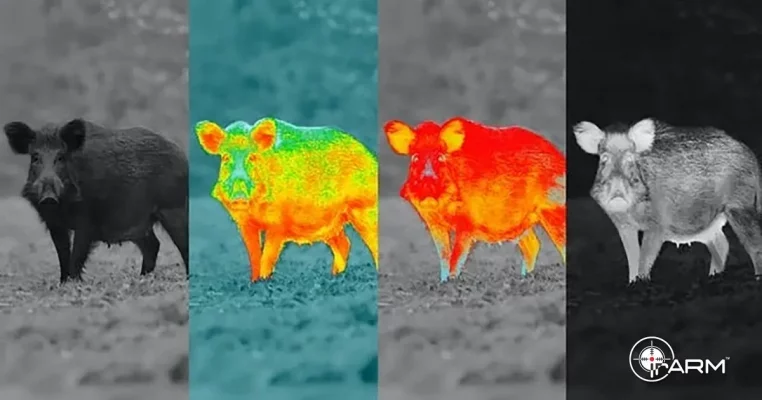
In the realm of hunting, few pursuits are as thrilling and challenging as tracking and taking down the formidable wild

Introduction How far can you shoot with a thermal scope? It’s a common question, but it’s not as simple as
irARM™ makes high-quality thermal scopes and cores for outdoor enthusiasts, hunters, and law enforcement. irARM™ is the trusted option for those seeking dependable thermal imaging solutions.
Subscribe to Receive News and Promotions from irARM’s marketing team.
